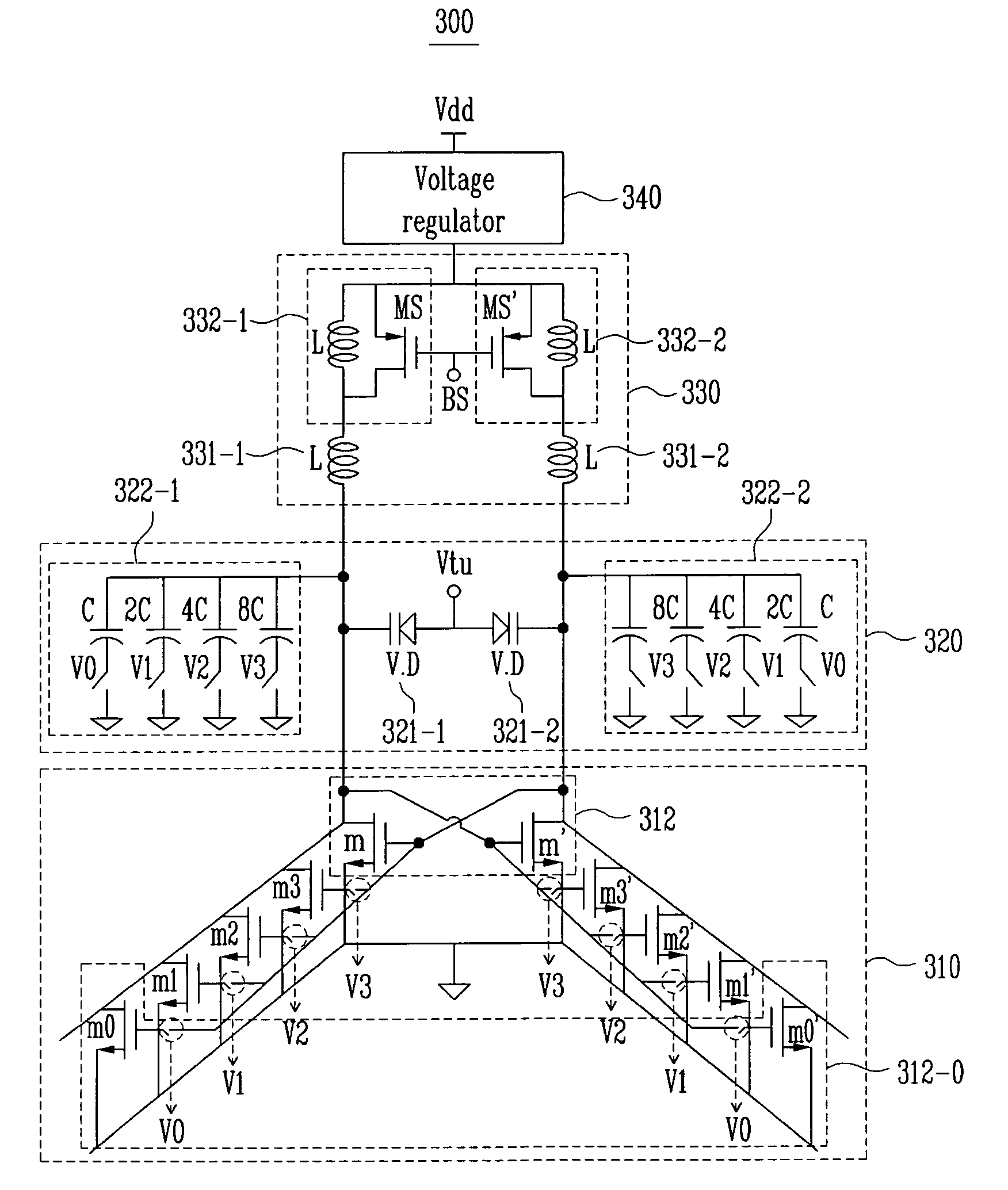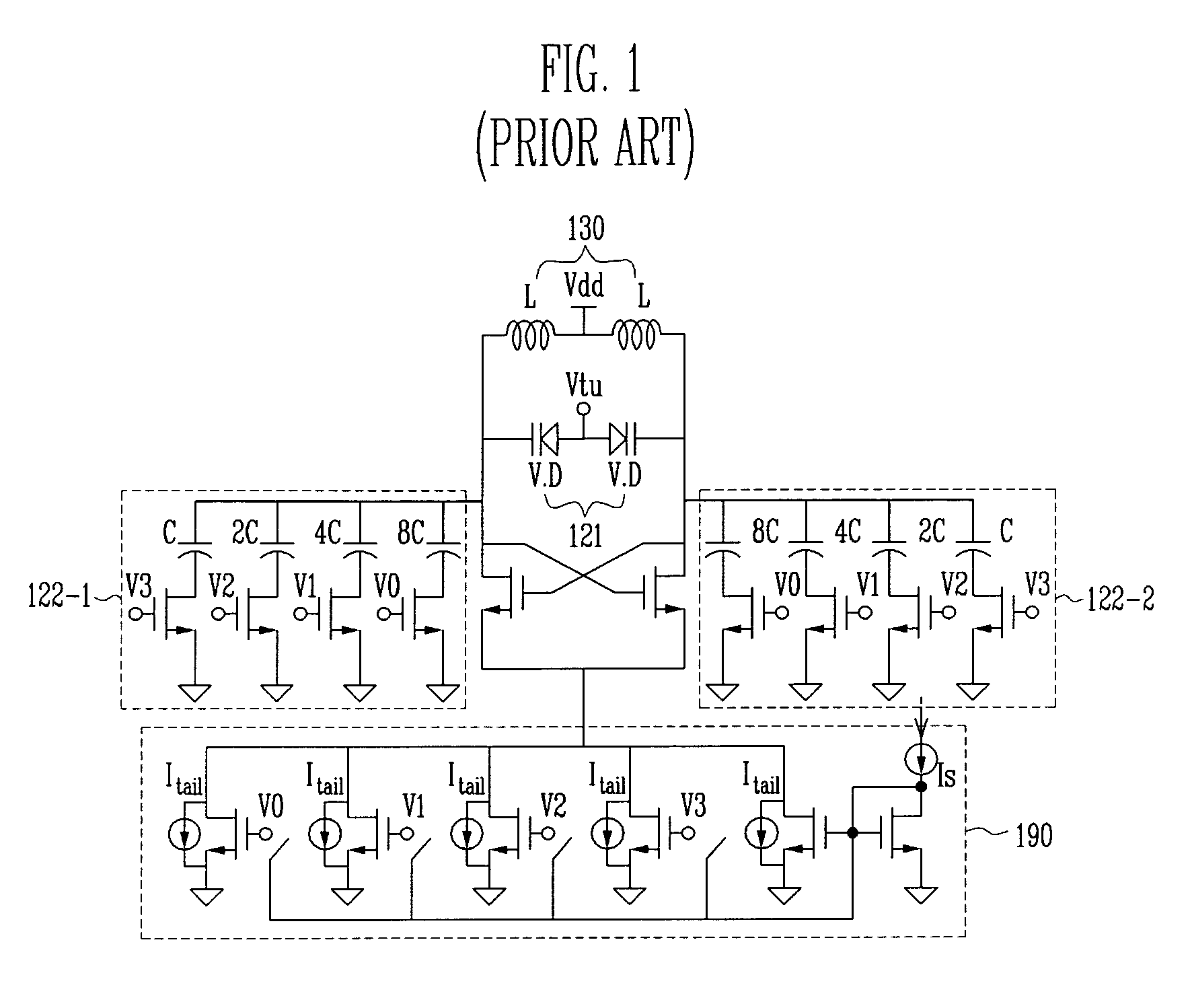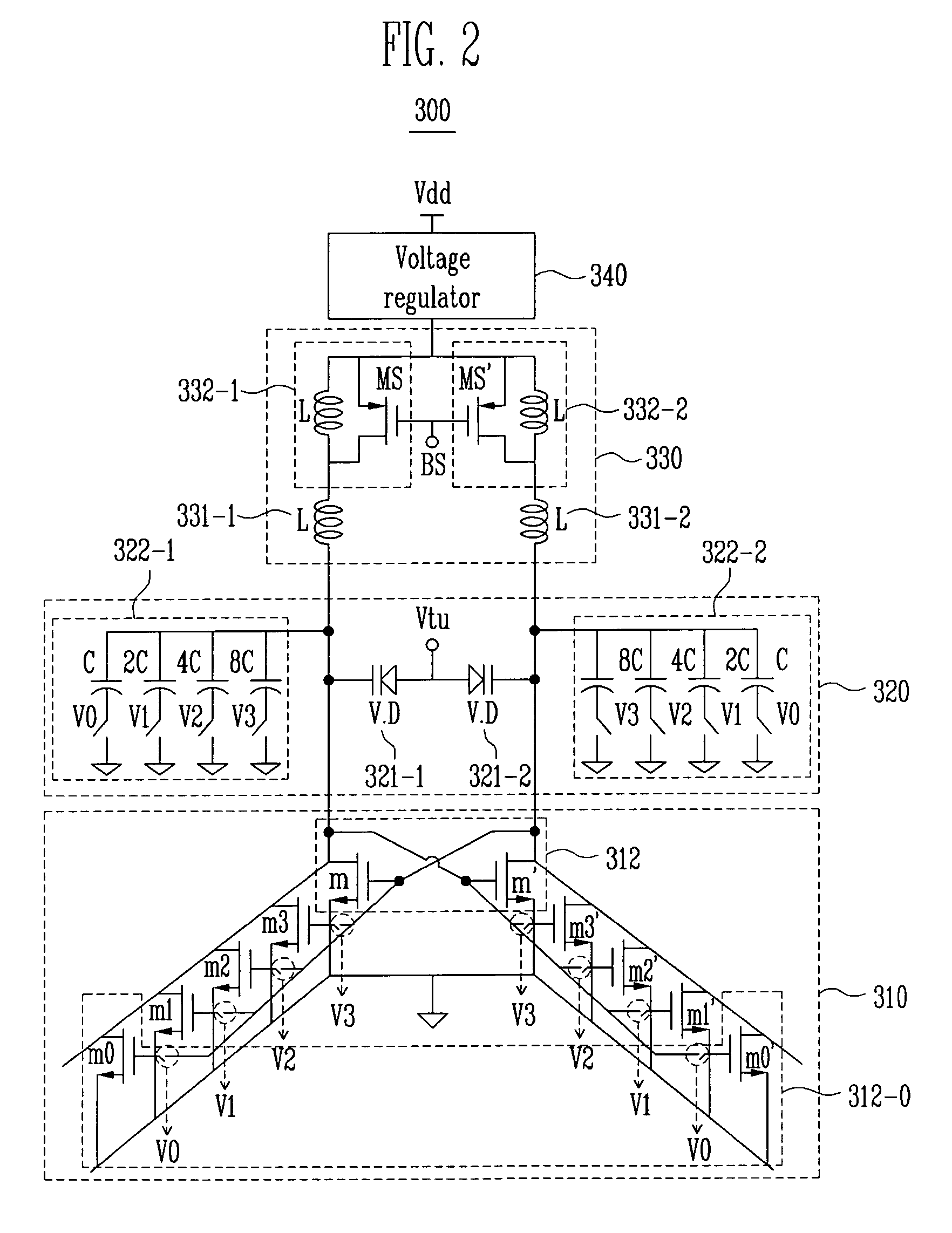Multi-band LC resonance voltage-controlled oscillator with adjustable negative resistance cell
a voltage-controlled oscillator and negative resistance technology, applied in pulse generators, pulse techniques, modulation, etc., can solve the problems of increasing the phase noise of the voltage-controlled oscillator, and the difficulty of integrating a wide-band lc resonance voltage-controlled oscillator in a multi-band multi-mode wireless transceiver, so as to suppress phase noise and suppress noise
- Summary
- Abstract
- Description
- Claims
- Application Information
AI Technical Summary
Benefits of technology
Problems solved by technology
Method used
Image
Examples
exemplary embodiment 1
[0024]FIG. 2 is a circuit diagram of a wide-band LC resonance voltage-controlled oscillator 300 according to an exemplary embodiment of the present invention.
[0025]Referring to FIG. 2, the LC resonance voltage-controlled oscillator 300 includes an inductor 330, a capacitor 320, a discrete negative resistance cell 310, and a voltage regulator 340. Specifically, the inductor 330 provides an inductance element and the capacitor 320 provides a capacitance element that together determine the frequency of an oscillation wave. The discrete negative resistance cell 310 provides a discretely determined negative resistance element to keep the amplitude of the oscillation wave constant. Also, the voltage regulator 340 keeps a voltage applied from a power supply voltage terminal to the inductor 330 constant.
[0026]The inductor 330 includes a first inductor 332-1 and 331-1 and a second inductor 332-2 and 331-2, which are connected to the voltage regulator 340 and have different current paths. The...
exemplary embodiment 2
[0043]FIG. 4 is a circuit diagram of a wide-band LC resonance voltage-controlled oscillator 301 including an emitter-degeneration coupled pair 352 in addition to a negative resistance cell 350 according to another exemplary embodiment of the present invention.
[0044]Referring to FIG. 4, the LC resonance voltage-controlled oscillator 301 includes a voltage regulator 340, an inductor 330, first and second discrete capacitors 322-1 and 322-2, and first and second varactors 321-1 and 321-2, which perform almost the same functions as those of FIG. 2. A first inductor 332-1 and 331-1, the first discrete capacitor bank 322-1, and the first varactor 321-1 form one LC oscillation path, while a second inductor 332-2 and 331-2, the second discrete capacitor bank 322-2, and the second varactor 321-2 form the other LC oscillation path.
[0045]In the present exemplary embodiment, the LC resonance voltage-controlled oscillator 301 is structurally characterized by the emitter-degeneration coupled pair...
exemplary embodiment 3
[0051]FIG. 5 is a circuit diagram of a wide-band LC resonance voltage-controlled oscillator 302 with an adjustable emitter-degeneration negative resistance cell 360 according to still another exemplary embodiment of the present invention.
[0052]Referring to FIG. 5, the negative resistance cell 360 includes a plurality of unit discrete negative resistance cells that are connected in parallel in response to control bit signals V0˜V3. Each of the unit discrete negative resistance cells 362-0 is comprised of a pair of unit MOS transistors m, m′, m0, m0′, ˜m3, and m3′, a unit resistor, and a unit capacitor. The pair of unit MOS transistors m, m′, m0, m0′, ˜m3, and m3′ are configured as an emitter-degeneration coupled pair in which one drain is connected to the other source, and have drains connected to a connection node between an inductor and a discrete capacitor bank. The unit resistor is connected in series to the pair of unit MOS transistors m, m′, m0, m0′, ˜m3, and m3′, and the unit ...
PUM
 Login to View More
Login to View More Abstract
Description
Claims
Application Information
 Login to View More
Login to View More - R&D
- Intellectual Property
- Life Sciences
- Materials
- Tech Scout
- Unparalleled Data Quality
- Higher Quality Content
- 60% Fewer Hallucinations
Browse by: Latest US Patents, China's latest patents, Technical Efficacy Thesaurus, Application Domain, Technology Topic, Popular Technical Reports.
© 2025 PatSnap. All rights reserved.Legal|Privacy policy|Modern Slavery Act Transparency Statement|Sitemap|About US| Contact US: help@patsnap.com



